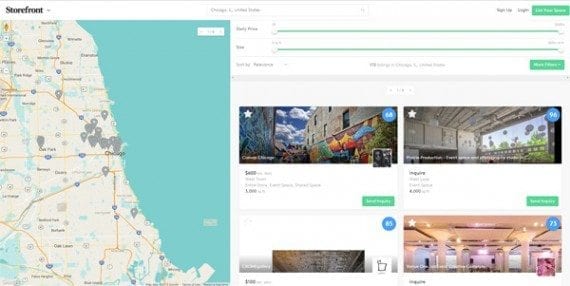Short-term holiday pop-up shops can boost sales, help test a new channel, reduce Christmas inventory, and even help online brands grow.
The pop-up retail trend is not particularly new. In the U.S., shopping malls have been adding holiday kiosks for years and many communities have Halloween or Christmas pop-up stores each year. But it is starting to catch on with more online retailers.
Ecommerce stores that have had success selling online and want to grow may consider opening a temporary, physical retail location to serve customers and increase sales. If your online business is thinking of capturing offline sales this holiday season, consider these four tips for starting your own pop-up shop
1. Have Clear Goals
Like any business venture or project, you should have clear, reasonable, and measurable goals for your pop-up shop. It may sound cliché to tell you to have goals as part of a list of tips, but this is the step from which everything else flows.
If your aim is to generate an extra $10,000 in holiday revenue, you presumably won’t want to pay $10,000 in rent. So your goal will inform your choice of location. Similarly, if you want to test the brick-and-mortar channel, you might choose to pick a vacant storefront in the neighborhood you are considering to learn how sales might be. Again, your goal informs your choice.
2. Get Loads of Foot Traffic
Pop-up shops must be in high traffic areas.
Some brick-and-mortar stores can be destinations. Shoppers may go out of their way to reach a specialty shop, especially an established one. But your brand new, here-today-gone-tomorrow pop-up retail location is unlikely to be a destination store. Rather you need to capitalize on foot traffic that is already in the area.
To get loads of foot traffic, you have several options.
Consider, as an example, finding space within another retailer’s store. Some big box chains have retail space available at the front of their stores where hundreds of customers walk by.
You may also be able to find a specialty retailer in your target city or neighborhood that will rent you space. For these sorts of arrangements, look for stores that sell products which complement yours, but don’t compete.
You can simply rent vacant retail space in high traffic areas. This may be an open spot in a shopping center or on the street corner. One retailer in the Northwest, as an example, puts up a large 20-by-20 tent in a gas station’s lot on a busy street corner with tons of foot traffic. Its store stays open for two weeks and generates about $200,000 in revenue.
To help find good locations like this one, you can simply look around, search commercial real estate sites, or use a pop-up shop service like Storefront, which lists many prime pop-up locations.
3. Focus on Easy, Impulse Items
For your pop-up shop, focus on products at easy-to-afford price points that encourage impulse buying. Your pop-up shop customers probably just wandered by. They were not looking for you. So you need to convert on the spot.
In 2013, Psychology Today magazine suggested five reasons that folks purchase on impulse. These motivators were a desire to save money, avoiding loss, what the magazine called “twisted heuristics,” a high opinion of ourselves, and a simple love of shopping.
Of these, focus on three as you pick the products to feature in your pop-up shop and how to set your prices and offers.
- Money saving. Shoppers like to save money during the holidays. So present your pop-up shop customers with good values on gift items. Make these products that are easy to walk away with.
- Loss aversion. Describes our innate desire not to feel bad in the future, according to Psychology Today. In the context of your pop-up store, aim for items or offers that your customers will be afraid to miss.
- Twisted heuristics. Without going into the psychological details, consider bundling products to encourage impulse buys, such as buy one get one free.
As a final consideration for stocking your pop-up shop, consider items that are easy to carry away.
4. Merchandise Your Store
Retail merchandising is an art and a science that goes well beyond making things look pretty or even just presentable. How you display products in a physical store will have a significant impact on how things sell.
For example, one retail chain has found placing on-sale clothing items — think jeans — in stacks on tables can almost double sales versus putting the same clothing at the same price on rounders (round clothing racks).
Consider visiting several retail stores in your area, particularly ones that sell similar products to what you will have in your pop-up store. Take note of how they display items. If you can, take pictures.
You are going to need to experiment a bit, but always test your visual displays with data. Watch items to see how moving them around the pop-up store impacts sales.





